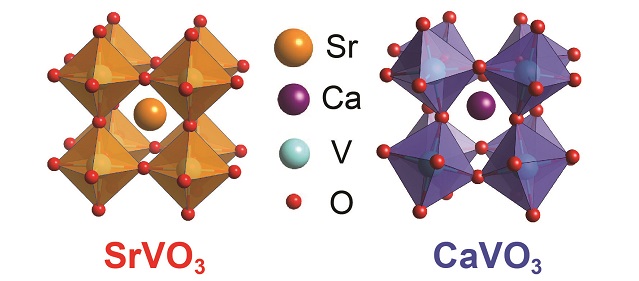A novel material has been discovered that is both highly conductive and optically transparent. This material could be used to produce next-gen touch screens at a fraction of the price they currently cost to make with no loss in efficiency or quality.

Oleksiy Mark | Shutterstock
Indium tin oxide (ITO) is a transparent conductor that is widely used in the display industry. ITO is so popular in display manufacturing that the industry is responsible for over 90% of its global use. As a result of its large popularity, and dwindling resources, there has been a significant increase in the cost of ITO over the last 10 years.
This rising price has had a knock-on effect on the price of mobile products, such as tablets and smartphones, with touchscreens and displays containing ITO contributing to 40% of the overall cost. Although processors and memory chips have followed Moore's Law and become affordable, tablet and smartphone displays have become relatively more expensive from one generation to next.
To solve this problem product manufacturers have been looking for a potential ITO substitute, but until now no new material has been developed that correlates with ITO’s unique combination of electrical conductivity, optical transparency and easy processing.
A research team at Penn State Materials Research Institute, led by Roman Engel-Herbert, have developed a new unique material design concept to overcome this issue. Using their new methods a novel class of materials, known as correlated metals, were used.
Correlated metals have a thickness of less than 10 nm and their electrons move like a liquid. This is in contrast to electrons in the majority of traditional metals like gold, copper, silver, or aluminum which move like a gas. It is this liquid like behaviour that allows the metal to be optically transparent whilst retaining high, metal-like conductivity.
“We are trying to make metals transparent by changing the effective mass of their electrons. We are doing this by choosing materials in which the electrostatic interaction between negatively charged electrons is very large compared to their kinetic energy.
As a result of this strong electron correlation effect, electrons ‘feel’ each other and behave like a liquid rather than a gas of non-interacting particles. This electron liquid is still highly conductive, but when you shine light on it, it becomes less reflective, thus much more transparent.
Roman Engel-Herbert - Penn State
Now that the researchers understand the mechanisms behind their findings they are positive that other correlated metals, which behave similar to the calcium vanadate and strontium vanadate that they used, can be found.
I came from Silicon Valley where I worked for two years as an engineer before I joined the group. I was aware that there were many companies trying hard to optimize those ITO materials and looking for other possible replacements, but they had been studied for many decades and there just wasn’t much room for improvement.
When we made the electrical measurements on our correlated metals, I knew we had something that looked really good compared to standard ITO.
Roman Engel-Herbert - Penn State
Currently the price of indium is approximately $750 per kilo. In comparison vanadium costs around $25 per kilo, which is less than 5% of the total price of indium, whereas the cost of strontium is even less than that of vanadium. These huge savings in cost are a massive motivator for the research.
“Our correlated metals work really well compared to ITO. Now, the question is how to implement these new materials into a large scale manufacturing process. From what we understand right now, there is no reason that strontium vanadate could not replace ITO in the same equipment currently used in industry.
Roman Engel-Herbert - Penn State
In addition to the development of display technologies the team are also exploring the idea of combining the novel materials with solar cells produced from organic perovskite materials. Perovskite is a relatively new material that is commercially available and exceeds the performance of silicon solar cells.

Perovskite solar cells require a transparent conductor to be useful. Strontium vanadate is perovskite and is also a correlated metal. Thanks to this structure, efficient and cost-effective solar cells could possibly be developed in the future.